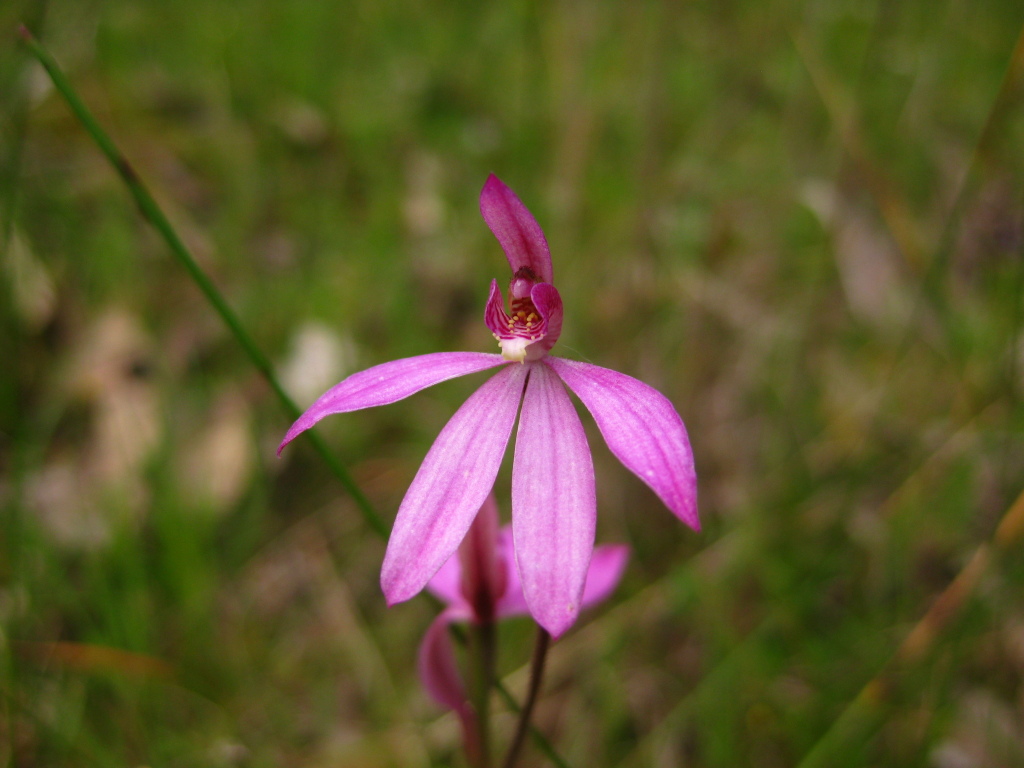Caladenia ornata
(Nicholls) D.L.JonesFlowering plant slender, 10–18 cm tall. Leaf linear, 9–15 cm long, shorter than flowering stem, 2–3 mm wide. Flowers 1 or 2, bright pink, centre sometimes paler pink or whitish; ovary 5–10 mm long; perianth segments mostly greenish pink on outside, with numerous sessile and stalked glands; dorsal sepal erect, linear, 9–14 mm long, 2–4 mm wide, usually more than 3 times as long as broad, apex bluntly acute to acute; lateral sepals often fused at the base, free section parallel to spreading slightly, sometimes slightly asymmetric, lanceolate, 10–15 mm long, 4–5 mm wide; petals spreading, 8–12 mm long, 4–5 mm wide. Labellum sessile, 3-lobed, 5–6 mm long, 6–8 mm wide (when flattened), dark pink with dark red transverse bars; lateral lobes prominent, broad, margins entire, anterior margin rounded; mid-lobe small, recurved, triangular, usually about same length (when straightened) as lateral lobes, toothed, cream or yellow at apex; lamina calli in 2 rows up to base of mid-lobe, stalked and clubbed, yellow. Column incurved, narrowly winged, barred with dark-red; anther with a long point. Flowers Oct.–Dec.
Wim, GleP, VVP, Gold, CVU, GGr, DunT, HNF. In Victoria known only from the south-west in heathy forest on seasonally moist sandy loam.
In some areas Caladenia ornata is intermixed with C. carnea and some specimens are difficult to assign to one or the other.
Entwisle, T.J. (1994). Orchidaceae. In: Walsh, N.G.; Entwisle, T.J., Flora of Victoria Vol. 2, Ferns and Allied Plants, Conifers and Monocotyledons, pp. 740–901. Inkata Press, Melbourne.
 Spinning
Spinning

